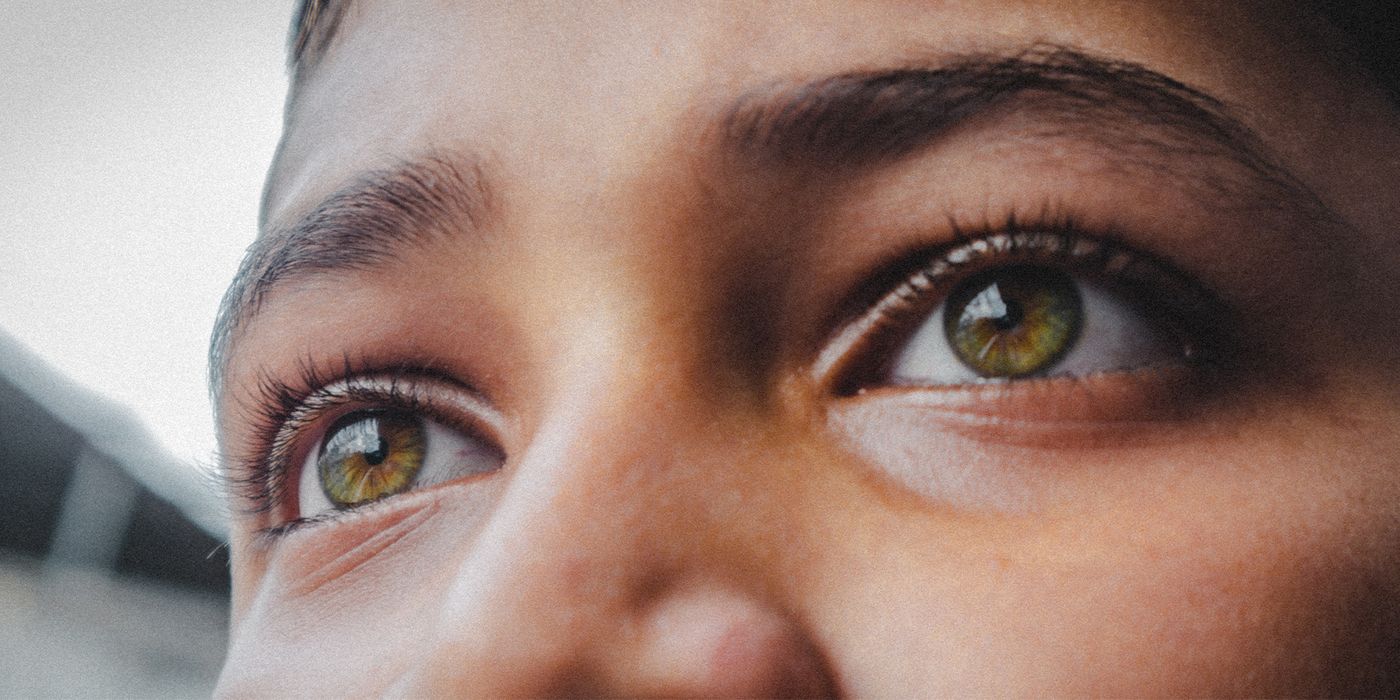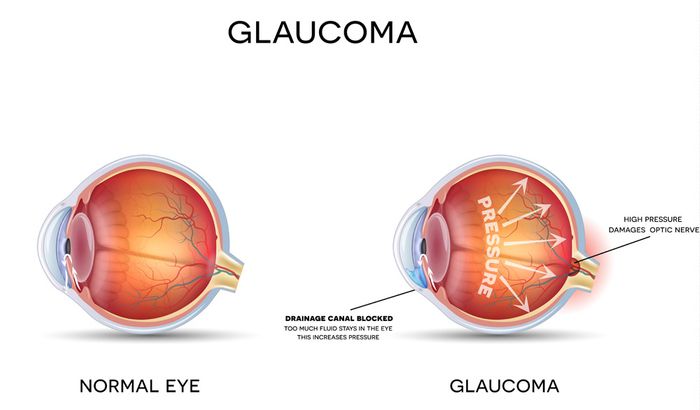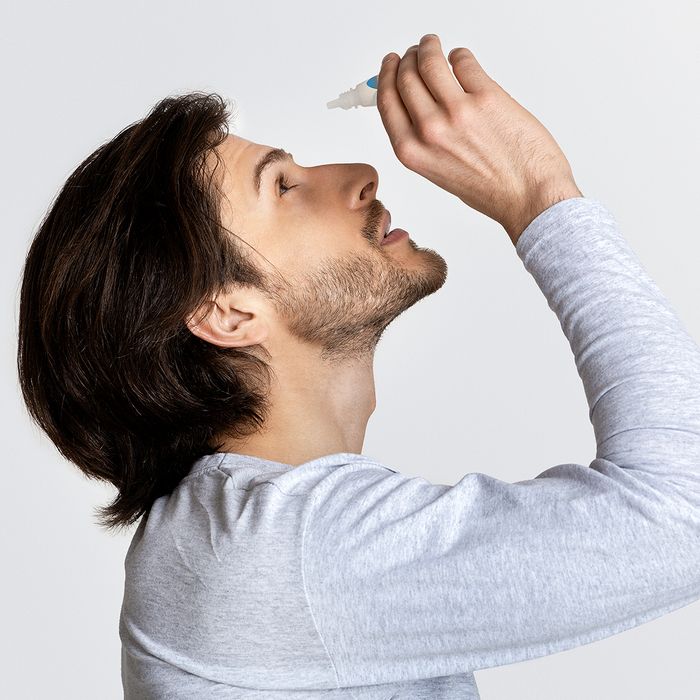Conditions
Conditions Treated At Bogey Hills Vision Center
It is important for everyone to rely on a trained and experienced eye care team in the Saint Charles MO area. In addition to preventative care, there are acute care issues that can arise as well. The optometry team from the Bogey Hills Vision Center is here to provide eye care services for a range of conditions. With any condition, it is always best to diagnose any potential problems as early as possible to revert or reduce the possible effects of the problem, and that is best done with consistent yearly visits to your vision center.
Refractive Errors
This is perhaps the most common vision condition we treat. These errors arise from problems such as myopia (nearsightedness) and hyperopia (farsightedness). With the help of corrective lenses, these refractive errors can be corrected, allowing someone to see and read clearly once again.
Macular Degeneration
This is also a common reason why people have trouble with sharp and central vision. Over time, aging results in damages to the macula, which is important for central vision. A trained optometrist can help someone manage the problems that arise with macular degeneration, providing relief for people who suffer from this condition.
Cataracts
This is a problem that occurs with the lenses of the eyes themselves as people age. Cataracts can lead to the clouding of the lenses. This is also the leading cause of blindness across the world. Fortunately, there are treatment options available that can help someone remove the cloudy lens and replace it with an artificial lens, allowing them to see clearly once again.
Diabetic Retinopathy
As diabetes continues to increase in its prevalence throughout the United States, this complication is going to increase as well. Diabetic retinopathy can lead to blindness if it progresses unchecked. This is where it is critical for people to rely on a trained eye care provider who can tell them if there is any changes to their eyes before it become too late to fix.
Diabetic Retinopathy
Diabetes is the top reason for new vision loss in U.S. adults. Sometimes diabetic retinopathy patients who arrive at our Bogey Hills Vision Center in Saint Charles are unaware of any changes in their sight. Our practice stresses the importance of regular exams with our optometrist to detect and monitor this and other vision disorders.

What is Diabetic Retinopathy?
Diabetic retinopathy steals an individual’s vision by progressively destroying the eye’s retina. Higher-than-normal levels of blood sugar cause small blood vessels in the retinal lining to start leaking blood, other fluid, and proteins. The body’s response unfortunately is to sometimes create more of these defective blood vessels. Our Saint Charles optometrist notes that the resulting blurry vision occurs due to fluid causing the retina to swell.
Both Type 1 and Type 2 diabetics are at risk for this disorder. Risk factors parallel the duration of time the patient has been diabetic.
Most sufferers notice few symptoms in the early stages. Some detect none. However, as the disorder advances, these signs are likely to appear:
- Blurry vision
- Holes or black spots in the visual field
- Presence of spots or floaters
- Trouble perceiving colors
- Issues with vision at night
Complications can lead to vision problems such as vitreous hemorrhage, glaucoma, a detached retina, and eventual blindness.
Treatment Options
Our eye doctor diagnoses diabetic retinopathy during a comprehensive vision exam and a review of the patient’s health history. This appointment includes refracting both eyes, checking visual acuity, measuring internal eye pressure, and assessing structures in both eyes.
It is possible to retard the development as well as the progression of the disorder by sufficiently regulating a diabetic’s blood sugar levels. Treatment recommendations at our Bogey Hills Vision Center match the level of severity of each case of diabetic retinopathy.
A combination of regular monitoring and eyewear changes as needed is often sufficient during the early stages of the disorder. Patients can help themselves by taking any blood pressure or blood sugar medications exactly as prescribed.
Medications to help stop the formation of new blood vessels benefit some patients. Laser surgery is sometimes helpful in stopping fluid leakage and in destroying new vessels when retinopathy is advanced.
Dry Eye
Dry eye syndrome is a condition that has become common, causing a variety of uncomfortable symptoms that impact your ability to see clearly and comfortably. Treatment for dry eye syndrome can help to relieve symptoms and improve visual comfort. At Bogey Hills Vision Center, we treat dry eye for residents of Saint Charles, St. Peters, and Cottleville.
Symptoms of Dry Eye
You may frequently feel a scratchy feeling in the eyes or a sensation like something is in the eye. Your eyes may be sensitive to light, or you may have trouble wearing your contact lenses. Eyes may be red or have a mucus discharge. The eyes may water frequently, and you may have blurred vision. You may have difficulty driving at night or have constant eye fatigue.
What Causes Dry Eyes?
Dry eye problems occur when not enough tears are produced or the quality of those tears is insufficient to moisturize the eyes. Tears are made of water, mucus, and oil, and a problem with the production of any one of these components can lead to eye dryness.
Who Gets Dry Eyes?
Generally, people over the age of 50 are at a higher risk of developing dry eye syndrome. Women are also more prone to dry eyes because of hormone changes that occur. Individuals who wear contact lenses are at greater risk for dry eyes, as well, and certain medications can also cause dryness.
Treatment Options
Over-the-counter eye drops can be helpful for mild cases of dry eye. For more severe symptoms, our optometrist can provide prescription medications to increase eye moisture. Eye drops can be prescribed to reduce inflammation of the cornea. Punctal plugs are a viable alternative for those with more severe symptoms. These tiny devices help to prevent the draining of eye fluids. Warmth and massage can help to unblock glands in the eyes. Surgery may be needed for the most severe cases.
Preventing Dry Eye Symptoms
Eye health experts recommend blinking more frequently to moisten the eyes. Avoid having warm air blowing on your eyes. Don’t smoke, and avoid smoky environments. If you work in a dry environment, close your eyes for a few seconds periodically to improve eye moisture and use artificial tears.
Dry Eye FAQ
If you are one of the millions of people who suffer from dry eye, you may have several questions about it. At Bogey Hills Vision Center in Cottleville, Saint Charles, and St. Peters, we pride ourselves on answering some of the toughest questions you have about eye care and health. In today's post, we'll be looking at some of the most common questions we receive regarding dry eye.

What are the symptoms of dry eye?
The most common symptoms of dry eye include a burning sensation, stinging, or itching in the eyes. You may also experience redness, light sensitivity, watery eyes (which is caused by your tears overcompensating for the lack of moisture), and blurry vision. In more severe cases, you may also see mucus in or around your eyes. If that's the case, consider visiting any of our four locations in Saint Charles, Saint Peters, and Cottleville for immediate treatment.
What causes dry eye?
There are a few different things that can cause dry eye. One of the most common is simply not blinking often enough. When you don't blink, your tears don't have a chance to spread over your eyes and keep them lubricated. Dry eye can also be caused by certain medications like antihistamines, decongestants, antidepressants, and more. It can also be caused by medical conditions like Sjogren's syndrome, rheumatoid arthritis, eyelid problems, and diabetes.
How does an eye doctor diagnose dry eye?
During your appointment, the optometrist will conduct a series of tests to determine whether or not you have dry eye. These tests include the Schirmer test (which measures tear production), the Rose Bengal staining test (which evaluates the surface of your eye for damage), and the Lissamine Green staining test (which also evaluates the surface of your eye for damage).
Eye Diseases
A quick look at some of the most common eye diseases diagnosed and often treated at Bogey Hills Vision Center.

Diabetic Eye Disease
Diabetes can cause damage in multiple organ systems of the body, which includes the eyes. It causes the small blood vessels in the delicate inner lining of the eye (retina) to leak fluid, blood, and proteins which can damage the retina. This is called background diabetic retinopathy. Early diabetic retinopathy may not require any treatment itself, but it is important to monitor closely and take necessary steps to better control blood sugar. If retinal swelling extends to the central, most sensitive part of the retina, visual acuity may be compromised. This is called diabetic macular edema and usually requires treatment. As diabetic retinopathy progresses, the damaged, oxygen-starved retina sends out signals that cause new blood vessels to form. This is called proliferative diabetic retinopathy and is almost always visually devastating due to damage to the retina and end-stage retinal detachment.
Diabetes is the leading cause of new vision loss in adults in the United States, so it is crucially important for those with diabetes to have regular, comprehensive eye examination and early interevention if there are any ocular findings. Diabetics also have a higher rate of dry eyes, cataracts, and poor healing of the front of the eye in case of an injury, etc. The doctors at Bogey Hills routinely evaluate those with diabetes for any signs of retinopathy. We have retinal cameras to photo-document any findings and an instrument called an OCT that images the microscopic, individual layers of the retina and measures any retinal swelling. Our doctors will always send communication or a report to your primary care doctor or endocrinologist.

Macular Degeneration
Macular degeneration is a chronic, progressive disease that gradually destroys sharp central vision due to a deterioration of the macula, a tiny spot in the central portion of your retina comprised of millions of light-sensing cells. Because it is so commonly associated with aging, it is also known as age-related macular degeneration (AMD or ARMD). Risk factors include family history, smoking, race, sun exposure, and possibly improper diet. Chemical reactions occur in the retina when visible light is converted to impulses in the cells of the retina. The job of the pigmented tissue layer underneath the retina is remove the waste products that are the result of this process. It seems that in ARMD, waste products are not removed properly and yellowish spots called ‘drusen’ appear. This is a sign of ‘Dry’ ARMD. Dry ARMD may range from a person being asymptomatic to significant vision loss. There is no cure for Dry ARMD, though the use of antioxidant dietary supplements do seem to slow the progression in a portion of those affected. In a percentage of those with ARMD, ‘Wet’ ARMD will occur. This is where new blood vessels grow under the macula. Unfortuntely, this blood vessels are poorly contructed, and leak, causing more damage. There are newer medications available now that are quite effective in treating Wet ARMD if administered in a timely manner.

Glaucoma
Glaucoma is a disease of the optic nerve in the eye. Glaucoma is actually a general term that includes more than one disease process of the eye. There is a congenital type that is caused by genetic malformation of the front of the eye, presenting in infancy or early childhood. Glaucoma can be ‘secondary’ to something like a major injury to the eye. There are less common subtypes called ‘pigmentary glaucoma’, ‘psuedo-exfoliative glaucoma’, and ‘neovascular glaucoma’. Also, there is a type called narrow-angle glaucoma which is caused by a rise of fluid pressure in the eye due to an anatomically small fluid drainage area. Narrow-angles may sometimes lead to something called an ‘angle closure’. This involves a sudden significant increase of fluid pressure in the eye that causes symptoms of pain, nausea, and blurred vision and potentially irreversible damage to the optic nerve. This is an ocular emergency and needs to be treated right away.
More often than not, though, the term ‘glaucoma’ is commonly used for a condition called ‘primary open angle glaucoma’, a slow but progressive degeneration of the optic nerve of the eye that may result in visual field loss and potentially blindness. It is called ‘the silent thief of sight’, because there generally are not any symptoms. Having high fluid pressure in the eye is a risk factor, but some individuals may develop glaucoma when their eye pressures are in the range considered ‘normal’. While there is no cure for glaucoma, there are medications and surgery available that can help halt further vision loss. Early detection and regular eye exams are vital to slowing the progress of the disease.
Eye Disease Management
Cataracts
A cataract is a clouding of the lens of an eye. This is a very common problem for the elderly. Thankfully, it takes years to develop and can be detected rather early. If left untreated, it can lead to blindness. Usually, the final treatment involves replacing the eye lens which is a common and effective procedure.
Glaucoma
Glaucoma is a group of eye diseases that have a common characteristic where the normal eye pressure starts to increase, affecting either the eyeball or the optical nerve. It can lead to blindness, so we need to monitor how it progresses. Glaucoma can be treated using prescription drugs or a surgical procedure depending on the severity of the condition. However, another form of glaucoma called closed-angle glaucoma comes very quickly. It is a medical emergency, so you need to promptly see us, go to an emergency room, or go to a medical clinic.
Macular Degeneration (AMD)
The macula is the part of the eye’s retina that receives the visible light of objects we are focusing upon. So, when there is any macular degeneration, that means something you are trying to concentrate upon start looking weird or simply disappears. This is especially common for the elderly, so there is a particular type called Age-related Macular Degeneration (AMD). Related to this is retinal detachment. This is serious and requires emergency medical attention. Blows to the eye most often cause this retinal detachment.
Diabetic Retinopathy
Diabetic retinopathy is a type of retinal disorder that may lead to blindness. If you have diabetes, be sure to see us soon so that we can monitor any changes in your eyes. Some simple treatments can be used if it is caught early enough.
Dry Eyes
Dry eyes are a common problem. If you need to take eye drops more than three times a day, it may indicate a severe medical issue that needs further examination. Many underlying conditions for dry eyes can be treated.
Trust the Team at the Bogey Hills Vision Center in Saint Charles
These are only a few of the many conditions our optometry providers can treat. At the Bogey Hills Vision Center, we work hard to place the needs of our patients ahead of our own. Our providers stay up to date on the latest information and technology in the field, allowing our doctors to provide expert care to everyone who walks through our doors. Our providers will take the time to get to know our patients, identify their individual needs, and address them appropriately. To learn more about how we can help you, please call us at (636) 946-1176 today to schedule an appointment. We would be honored to serve you.
Glaucoma
Avoid Glaucoma With Regular Checkups Here At Bogey Hills Vision
The vision loss you sustain due to glaucoma cannot be treated or turned around. That is why it is so important for you to do whatever you can to catch glaucoma early. Our team at Bogey Hills Vision Center will help you identify and address glaucoma as early as possible. While the damage caused by the disease cannot be reversed, it can be mitigated through preventative measures.

What Is Glaucoma?
When it comes to vision loss many people automatically jump to the immediate assumption that they have glaucoma. However, this is not usually the case. In reality, glaucoma typically doesn't affect people under the age of 60.
This vision condition stems from damage to the optic nerve. Once this damage is sustained the nerve can't be replaced. Typically, the damage is sustained due to a high level of pressure placed on the eye. The damage occurs slowly as the nerve degrades over time. Because this occurs so slowly you may not realize you're suffering from it until one day you wake up and realize you cannot see.
Two Main Kinds
While there are some variations, the two main kinds of glaucoma are open-angle and acute angle. Symptoms of open-angle glaucoma include tunnel vision and patchy blind spots that appear around the sides of your vision. Acute angle glaucoma comes with more severe eye pain, nausea, red eyes, and halos around lights.
How To Avoid Glaucoma
You might be wondering how glaucoma can be avoided if since it is so difficult to detect. The best way to go about doing this is to visit our Saint Charles optometry staff here at Bogey Hills Vision regularly. Just like you need semi-annual checkups with your doctor and dentist, you need to schedule checkups with your optometrist. A lot can happen in six months, but since this particular vision condition progresses so slowly, it can be identified before you notice any further corruption of your vision.
Identify Glaucoma Early On
The best way to avoid the further development of this vision condition is to schedule an appointment with us at our Saint Charlies optometry office today. For more information on glaucoma or to schedule an appointment, call us at (636) 946-1176.
Macular Degeneration
Macular degeneration is a condition that damages the macula, the central part of the retina responsible for central vision. The damage can cause blurred vision and blind spots that are called scotomas. This condition usually affects people over 60, but it may also occur in younger individuals.
Would you like to learn more about macular degeneration? Here at Bogey Hills Vision Center, serving Saint Charles, St. Peters, Cottleville, and the surrounding areas, we’d like to share some of our insights on this eye condition.
Types of Macular Degeneration
There are two types of age-related macular degeneration (AMD). Dry AMD is the most common and occurs when the macula thins out and proteins called drusen grow, causing gradual loss of central vision. Wet AMD occurs when abnormal blood vessels grow behind the retina. These blood vessels leak fluids that cause scarring of the macula.
Symptoms of Macular Degeneration
The symptoms of AMD depend on the type you have. Common symptoms include:
- Blurred or distorted vision
- Reduced central vision in one or both eyes
- Trouble seeing in dim light
- A blind spot on the side of your field of view
- Double vision
- Decreased color perception
- Changes to how you see movement
- Problems with depth perception
The following are the major risk factors for Macular degeneration:
- Age: It’s common among individuals over 60 years
- Gender: AMD is common in women than men
- Family history: If your parents had macular degeneration, there is an increased chance that you will develop it too
- Race/ethnicity: It’s prevalent among Caucasians
- Smoking
- High blood pressure
- Diabetes
- Obesity
- Low levels of vitamin D in the body
- Cardiovascular disease
Is Macular Degeneration Preventable?
Routine eye exams are crucial in identifying the early symptoms of macular degeneration. Additionally, the below measures can help prevent AMD:
- Avoid exposure of the eye to sunlight
- Reduce your intake of saturated fats
- Eat plenty of fruits and vegetables
- Limit alcohol and smoking
- Get regular exercises
- Manage other medical conditions like hypertension and diabetes
How Is Macular Degeneration Treated?
Currently, no cure for macular degeneration has been discovered. However, our optometrist can suggest the following ways to manage your condition.
- Low vision aid: Our doctor can suggest special lenses that can enlarge the nearby image for visibility.
- Medications: Depending on whether you are suffering from dry or wet macular degeneration, your optometrist can recommend medications that help to prevent the growth of new blood vessels.
Pink Eye

Pink Eye Diagnosis and Treatment from Our Saint Charles Optometry Team
Did you know pink eye can affect people of all ages, not just young children? This condition can be caused by many factors that require different treatment, which is why knowing the underlying cause is so important. Call us or keep reading to learn more about pink eye and how our Saint Charles optometrist team treats this common eye issue.

How Our Saint Charles Optometrist Team Treats Pink Eye
Sometimes (though not always), pink eye will clear up on its own, but may lead to long-lasting and potentially serious damage if left untreated. That is why we encourage you to consult with our optometrist team as soon as you notice signs or symptoms of pink eye in yourself or a loved one. Our eye doctor staff, serving St. Peters, Saint Charles, and Cottleville, MO, offer a range of effective treatments for pink eye, including:
- Topical or eye dropper antibiotics
- Allergy medications
- Re-fitting of prescription eyewear (e.g., temporary use of eyeglasses instead of contact lenses)
- Patient education on symptom management, hand hygiene, removal of allergens, etc.
Treatment from pink eye depends on the cause of your condition. Meeting with an eye doctor is essential for relief!
Worried about Pink Eye?
Don't gamble on your family's vision and eye health. If you're concerned about pink eye, contact Bogey Hills Vision Center at (636) 946-1176 to schedule an appointment with one of our experienced optometrists today.
Treatments
For many of the common eye diseases, there are non-surgical treatments available. It is not usually possible to restore lost vision, but it is possible to stop the progression of most eye disorders. Early diagnosis is the key to treating eye disorders.
If we determine that you may need eye surgery, we can refer you to the best-suited eye surgeon in the region. We also provide pre-op and post-op exams. Bogey Hills Vision Center in Saint Charles, MO, can help you see the world with confidence and more clarity. Call us today at (636) 946-1176 to schedule an appointment.
Understanding Pink Eye
The outer layer of your eyeball and the inner layer of your eyelids are covered with a thin clear tissue called the conjunctiva. Pink eye, also called conjunctivitis, develops when something irritates and inflames this tissue. The most common causes of pink eye include bacterial or viral infections, chemical exposure, allergic reactions, or other underlying disease processes.

Signs and Symptoms of Pink Eye
If you have pink eye, one of the first things you'll notice is redness or pinkness in the white parts of the eyes (sclera). This happens because small blood vessels in the eyes will dilate to release immune molecules into the area that help control inflammation and start the healing process.
Other signs and symptoms of pink eye include:
- Watery discharge (in bacterial conjunctivitis, this discharge may look greenish or yellowish)
- Crusty dry residue that sticks to the eyelids or lashes
- Increased light sensitivity
- Itchy eyes
- Blurry vision
- Runny and stuffy nose (when pink eye is caused by an allergic reaction)
Pink eye symptoms can affect one or both eyes. Rubbing or itching affected eyes can lead to complications like corneal scratches or the spread of pink eye to other people (in the case of viral or bacterial conjunctivitis, which tend to be very contagious).
